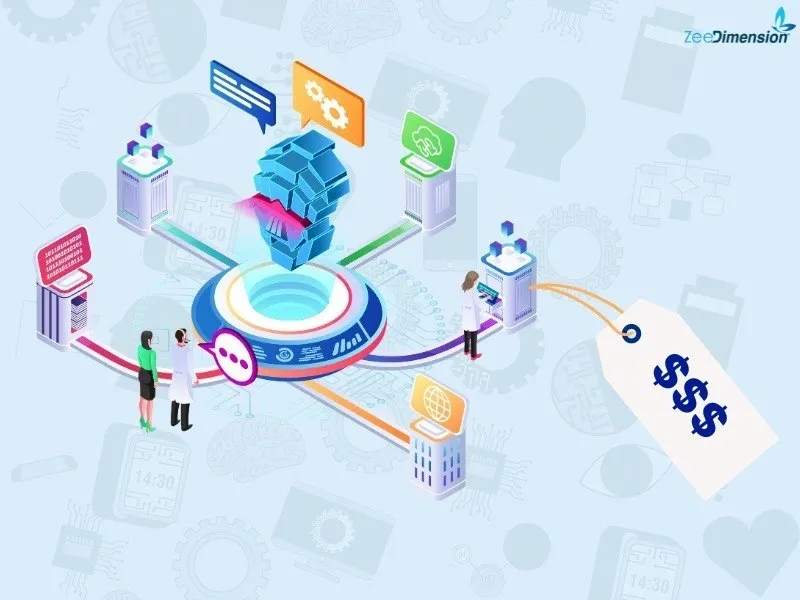
What Makes Large Language Models (llMs) Expensive? Large language models (LLMs) like GPT-4 have revolutionized various industries, but they come with substantial expenses. Key cost drivers include the
-
Data Collection & Preprocessing
-
High Computational Power
-
Infrastructure & Energy
-
Ongoing Maintenance
-
Specialized Talent
let’s explain all these keys in more detail.
📷
-
Data Collection & Preprocessing
Data collection and preprocessing are essential for training large language models (LLMs), requiring massive datasets that incur significant costs.
Gathering and ensuring the quality of this data is resource-intensive, demanding considerable time, manpower, and financial investment. Additionally, the cleaning and preparation of data further increase expenses, establishing a direct correlation between the volume of data and the financial burden on organizations.
-
High Computational Power
Training a large language model (LLM) demands immense computational power, involving billions of calculations that necessitate costly hardware, such as GPUs and TPUs. The financial implications are significant; for instance, training GPT-3 alone incurred costs in the millions of dollars. Let’s example this scenario
How much does it cost to generate 100 words using an LLM?
It can range from $0.01 to $0.10 per 100 words for high-performance models.For larger models, like GPT-4, generating 100 words could cost up to $0.50 due to the higher computational power required.
-
Infrastructure & Energy
Large language models (LLMs) necessitate significant cloud infrastructure and energy, resulting in high operational costs due to the enormous power consumption of data centers. This raises concerns about sustainability, as the carbon footprint of these energy-intensive systems becomes increasingly relevant. Organizations leveraging LLMs face the challenge of balancing infrastructure expenses with the environmental impact of their energy use.
-
Ongoing Maintenance
Large language models (LLMs) need regular maintenance and updates to maintain accuracy, which involves retraining with additional data and substantial computing power, leading to increased operational costs. Continuous fine-tuning to adapt to changing language patterns further adds to these expenses.
-
Specialized Talent
Developing large language models (LLMs) requires specialized AI professionals, such as engineers, data scientists, and researchers, whose demand is rapidly increasing. This competition for top talent results in higher salary costs, creating a significant financial burden for organizations investing in LLM development.
6 Proven alternatives to Reduce Large Language Model (LLM) Costs:
To reduce the significant costs linked to large language models (LLMs), several effective alternatives can be explored.
1- Smaller Models with Fine-Tuning: trained on specific tasks can be an effective alternative to large language models, offering lower resource requirements while still delivering strong performance. By fine-tuning these models for particular applications.Efficient for focused use cases.
2- Knowledge Distillation: it involves training smaller models to mimic the behavior of larger models, resulting in reduced operational costs while maintaining similar performance levels. This technique allows organizations to benefit from a simplified architecture that is easier to deploy and manage.
3-Federated Learning: Enables distributed model training across various devices or servers, significantly lowering infrastructure costs by minimizing the need for centralized data storage. This approach is also privacy-focused, as it eliminates the necessity for sharing raw data, allowing organizations to train models while keeping sensitive information secure.
4-Zero-shot and few-shot learning: Techniques enable models to perform tasks with minimal data, significantly reducing training costs. Zero-shot learning allows models to tackle new tasks without any task-specific training, leveraging their general understanding to make accurate predictions. Conversely, few-shot learning requires only a handful of examples to adapt to new tasks effectively
5-Transfer learning: allows organizations to utilize pre-trained models, enabling faster and more cost-effective development. By leveraging models that have already been trained on large datasets, companies can avoid the time-consuming and resource-intensive process of training from scratch.
6-Open-source models: GPT-Neo and smaller BERT variants offer organizations a valuable opportunity to leverage large language models without incurring licensing fees. These models can be freely accessed and modified, allowing businesses to customize and fine-tune them according to their specific requirements.
Example Scenario
Scaling up: What about generating 1,000 words using an LLM?
Costs range from $0.10 to $5.00 for high-end models, depending on complexity and computing needs. Exploring alternatives could cut these costs by 50% or more.
Conclusion
While large language models (LLMs) offer extraordinary capabilities, their related expenses might be prohibitive for many enterprises. To manage this problem, it’s vital to examine alternatives such as fine-tuning smaller models or adopting open-source or distilled versions. Organizations may efficiently balance cost and AI performance by investigating these choices, which enables them to make use of cutting-edge technology without going over budget. Implementing AI strategically can result in more long-lasting and productive solutions that meet company objectives.







